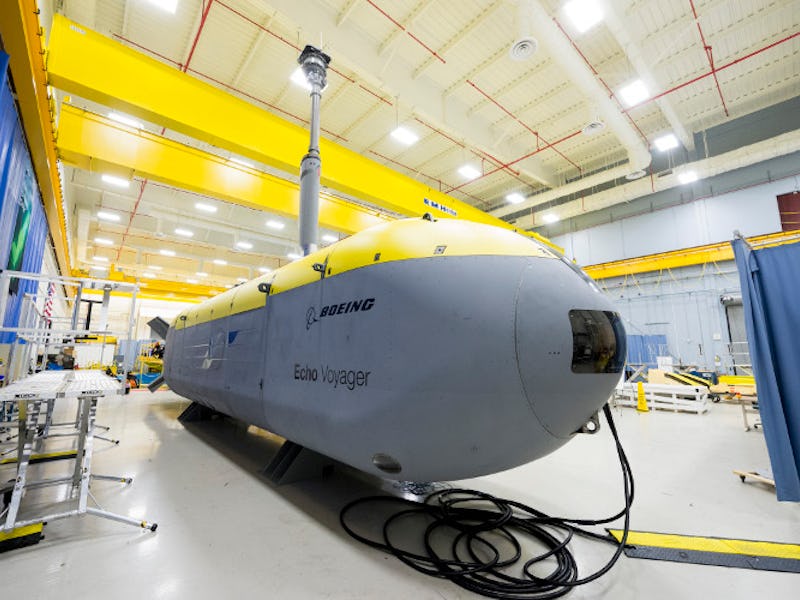Boeing's New Autonomous Submarine Can Stay Submerged for Months
The new AUV can explore oceans for months by itself.

We’ve seen some pretty amazing views of solar eclipses and other planets, and now Boeing’s Defense, Space and Security Unit’s new unmanned submarine named [Echo Voyager] (http://boeing.mediaroom.com/index.php?s=20295&item=129658#assets_117) will explore the depths of our planet’s ocean. The third autonomous underwater vehicle (AUV) in Boeing’s Echo series can operate for three months or more (depending on the mission) with its upgraded hybrid rechargeable power system.
Boeing is pretty excited about welcoming the new addition to the Echo family.
This new upgrade is a major step for Boeing, because Echo Voyager’s two predecessors could only collect data for two to three days autonomously. Its 51-foot-long gray and yellow body is impressive next to the 32-foot Echo Seeker and 18-foot Echo Ranger. However, Echo Voyager could only dive down to 11,000 feet (about two miles), while Echo Seeker can reach 20,000 feet (3.7 miles).
“If I choose one word to describe Echo Voyager: Awesome,” Lance Towers, director of Boeing Phantom Works, says in the below video that was posted Thursday.
Because the system enables Echo Voyager to remain submerged for longer periods of time, “missions can be conducted at significantly lower costs,” he said. “That’s a capability that does not exist today.”
AUVs are basically underwater robots. Boeing’s Echo vessels have gone on a wide range of missions, from sea surface surveillance to subsea search and military investigations. Last year, the baby of the family, Echo Ranger, took part in an oceanic anthropology study by the National Oceanic Atmospheric Administration (NOAA) and Coda Octopus, collecting 3-D images of the sunken World War II aircraft carrier, the U.S.S. Independence.
Boeing Echo Ranger took this 3D image of USS Independence in Half Moon Bay, California on a single pass.
Boeing foresees Echo Voyager embarking on extended operations that were not possible before: taking sonar surveys of sea floor, detecting radiation, locating ocean wreckage, and studying oil and gas deposits in the ocean.
Towers said that Echo Voyager could have helped during the Gulf of Mexico oil spill in 2010: “If we had the baseline water chemistry of the gulf before the tragic event we would have been able to take that baseline information and go back out and do subsequent surveys and determine how fast or how slow the gulf is recovering,” he said.
Today, underwater operations use surface ships that lower probes or tug along remote-operated vehicles to collect data, which can take up large amounts of time, said Towers.
Echo Voyager, on the other hand, “can do a lot of that processing while out at sea and then surface and provide that information to its users almost in a real-time environment,” he said.
It was only July of last year when Echo Seeker was announced, but engineers started designing Echo Voyager almost three years ago. Boeing has been developing AUV technology and vessels for 50 years or so, serving customers like the U.S. Department of Defense, NOAA, international governments, and agencies. The cost of operation depends on the mission, but Boeing officials could not disclose the cost of production or potential cost for the customer.
Echo Voyager will test its system off the coast of California later this summer, with a potential ocean survey as one of its first missions.